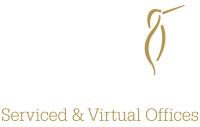
What is a serviced office and how can it help your business?
April 19, 2021
Being aware of your social sound bites
May 19, 2021Back to the office
We are slowly creeping towards normality where offices will once again open their doors to staff. During lockdown, many big tech companies presented a desire for workers to remain at home after the pandemic. This stance is now being reversed meaning one thing that employees are expected back into the office.The BBC recently wrote an article entitled Remote Work: Is Big Tech going off work from home? It provides interesting insights. Here is a summary of the main points:
Google – plans to bring forward their timetable of reuniting home workers in the office. Those wishing to work remotely for more than 14 days need to apply for permission.
Twitter - CEO Jack Dorsey stated during the pandemic that employees could work from home forever. Now this has been changed to if they are in a suitable role.
Microsoft - intends for less than 50% to work from home part time.
Amazon - are planning for an office centric culture as their baseline.
So, what does this tell us?
The following five elements are likely affecting the decisions:1. Will workers fail to collaborate effectively whilst working in varied locations?
2. How can those wishing to learn vital skills of leadership do so from home?
3. Are workers losing the edge for social interaction?
4. Can companies provide the necessary infrastructure required to support home workers full time?
5. What is the cost to businesses in terms of owning large corporate buildings with only half occupancies?
According to Statista 29% of leaders in the U.S stated that employees should be in the office 3 days a week to maintain a strong culture. Meaning workers would only be able to work remotely for 40% of a five-day week.
But what does a strong culture actually mean?
In the days before remote working became a thing, businesses thrived by having everyone in the office. Employees were assigned their own desk or cubicle situated in open planned offices working amongst teammates where they could easily collaborate, communicate and socialise. They had access to IT infrastructure, computer equipment and ergonomic workstations.Managers were on hand to instil a positive environment for all to thrive. They carried out face to face weekly team meetings or one to one's to discuss personal performance. This interaction improved morale and increased productivity.
But whilst this had advantages, many workers felt tied to their desk on a 9 to 5 basis or else were seen as not pulling their weight.
The Industrial Revolution
To further understand intentions going forward, let’s look back at the evolution of the office.Before the industrial revolution workers remained at home. Many worked jobs relating to farming, carpentry, pottery making, ironmongers and bakers. Community spirit was key for business survival relying on local customers.
This all changed between 1760 and 1840 when industrialisation took hold creating more opportunities. Workers relocated to cities taking up jobs in large-scaled factories. Conditions were harsh working with gruelling hours forcing families apart creating the first gap in what we know today as work life balance.
1900’s to 1930’s
By the early 1900’s insurance companies commissioned corporate offices. In 1906 Frank Lloyd Wright, designed the first modern office in The Larkin Administration building. This had mod cons such as air conditioning, built-in desk furniture and a cafe.In 1915 The Equitable Building skyscraper opened standing at 38 stories above ground. At the time this was the largest office building by floor area in the world and by the 1920’s became the most valuable building in New York.
Employees tended to work between ten to sixteen hours a day, six days a week. Until 1926 when Henry Ford changed the policy to eight hours per day equating to forty hours over a five-day period. Many others quickly followed suit.
1950’s to 1960’s
As the trend for offices took hold in the 1950’s a new type of workspace was introduced called the Burolandschaft or office landscape. This revolutionary organic design brought managers out of private offices onto open planned layouts separated by curved screens and plants.This continued until 1964 when Robert Propst designed the first cubicle in his so-called Action Office. The output of a comprehensive study of office layouts, examining employee engagement and an appraisal of furniture design to allow workers comfort and freedom of movement around the office. The cubicles whilst in later years became a hindrance at the time gave workers personal space, privacy and reduced noise.
1970’s to 1990’s
In the 1970’s microcomputers began to replace mainframe computers using a single integrated chip as it’s central processing unit. The first step in incorporating personal computers responsible for major technological changes going forward.Another influence came in 1973 when Jack Nilles, known today as ‘the father of telecommuting’ conducted a test programme expanding his theory on remote working. He envisaged satellite offices where workers could remain closer to home removing the need to commute. His findings whilst showed compelling benefits leaning to homeworking, unfortunately were not adopted.
Fast forward to 1982 and technology took another giant leap with the introduction of the first laptop computer formulated in the now familiar clamshell design. This device became popular amongst high-ranking business professionals when travelling outside of the office.
Advancement continued until the biggest shake up occurred in 1991 when the internet went live forever changing company operations. The technology exploded giving rise to applications such as email in 1993 and WiFi in 1999 offering workers even greater flexibility.
2000 and beyond
By the turn of the century the dot com boom flooded the market with tech start-ups. Real estate owners offered network enabled sites hoping to attract entrepreneurs to workspaces who synonymously approached their careers with a ‘work hard, play hard’ mentality.In 2005 Brad Neuberg first used the term co-working to describe workers meeting in environments outside of the traditional workplace. Technology continued to develop with mobile phones and in 2007 the smart phone bringing the office into the palm of every worker’s hand. This gave employees the capabilities to work remotely more easily.
By 2010 a burst of professionally interior designed office space became a common aspect. Believing the bigger the better to prestigiously represent a company’s brand. This included luxury lobbies, high tech infrastructure, conferencing facilities, board rooms and hot-desking options to further enable workers freedom no longer tied to their desks.
Fast forward to 2020 and workers were forced back into their homes working full time due to the pandemic. It could be said that apart from the advancement in technology we are back to where we started.
Conclusion
The evolution of jobs began from humble beginnings enabling a healthy balance between home and work life. But with workers keen to obtain better paid positions and searching for career advancement they were happy to travel to central office locations. The wants and needs of employees were sadly not taken into account.This has now changed with staff having a taste for working remotely and all the benefits this can offer. In today’s uncertain economy highly, skilled workers are needed to provide stability and as well as offering their experience they also have a voice and an opinion. Technology has opened the gateway for different solutions from working in traditional offices, remote and home working or a hybrid mix. The crucial element is ensuring that companies maintain an open mind regarding flexibility especially if they wish to retain and attract top talent.





